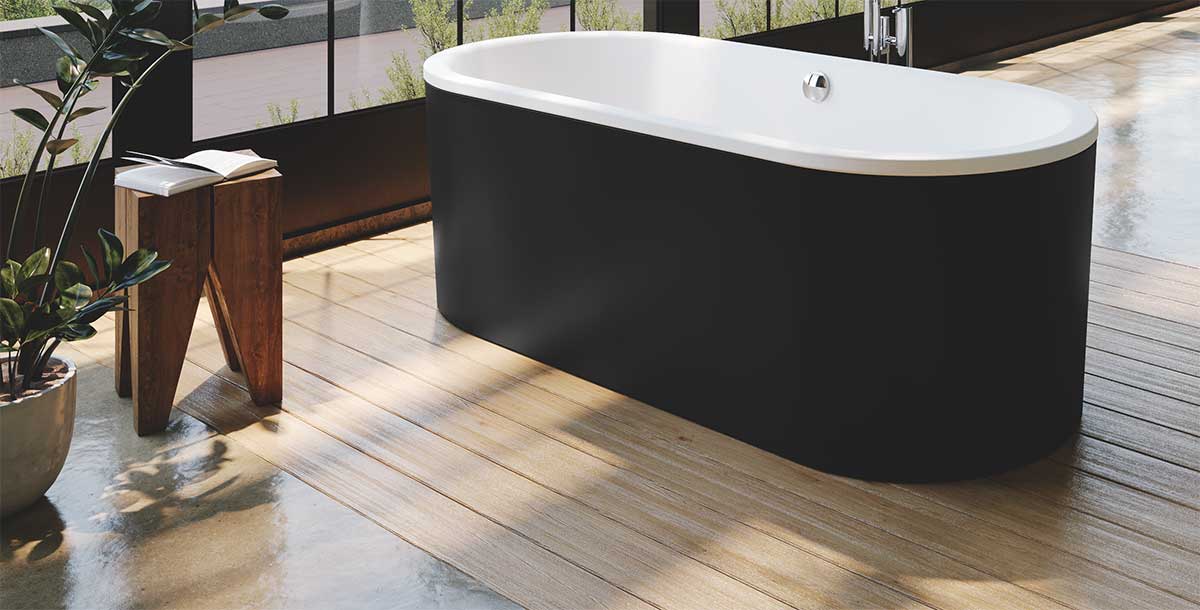Eco bathrooms: a guide to baths and basins
Sustainable designs that don't compromise on performance or style
Reducing energy use and saving water is the name of the game when designing an eco bathroom, since energy bills are on the up and climate change is a real concern. Look for greywater recycling options and baths that retain heat for longer. And limiting the carbon footprint of a refurbishment project is helped by choosing eco baths and basins made with recycled, reclaimed or natural materials.
Eco-friendly basins
Promote environmental health
The hi-tech anti-microbial finishes reduces the amount of cleaning and cleaning products needed. This washstand and ceramic basin with Hygiene glaze, plus matching tall unit, is from Vitra.
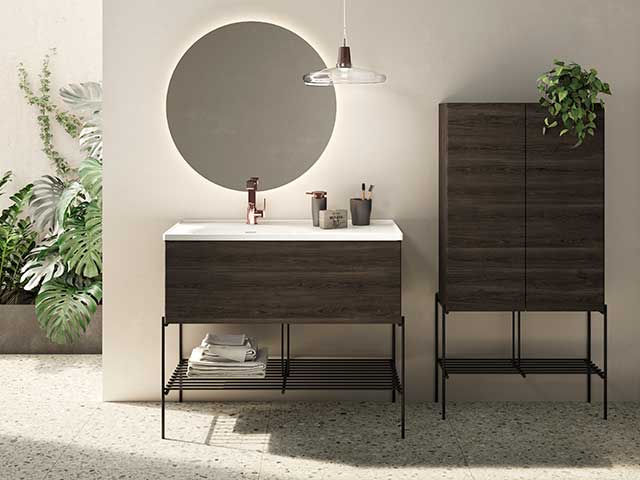
Photo: Vitra
When less is better
Some eco bathrooms sanitaryware manufacturers have developed new finer ceramics that are both lightweight and zero-waste, resulting in reduced CO2 emissions. This Inspira Soft on countertop basin in Fineceramic is from Roca.
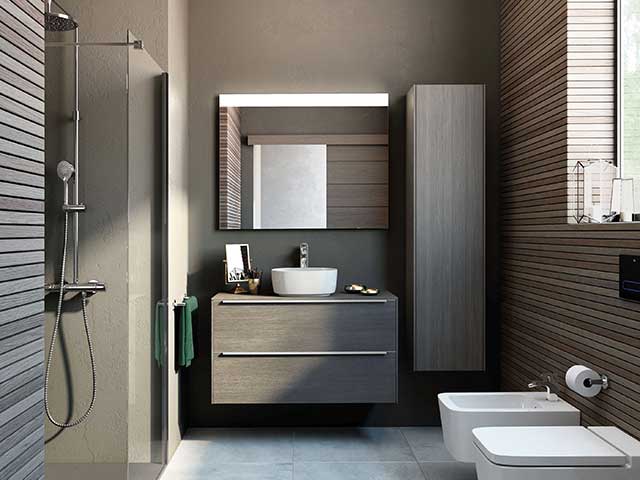
Photo: Roca
Nothing going to waste
Get the look of stone with a stone composite made using recycled waste material. It’s as durable as the real thing, heat retentive and repairable. An example is the Koto oval basin from Claybrook Studio.
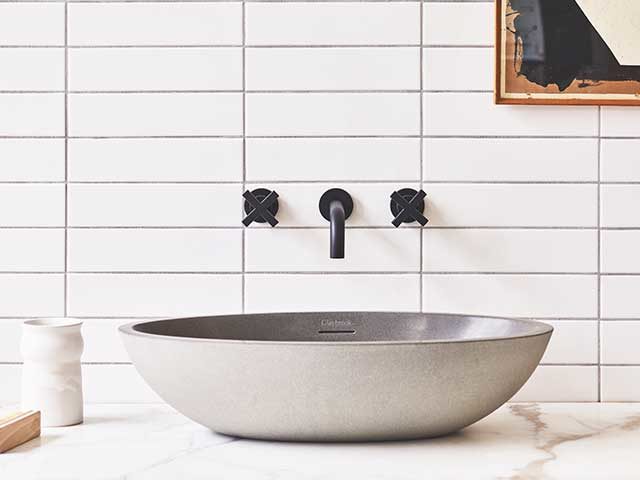
Photo: Claybrook Studio
Due diligence
Check manufacturers’ websites to assess their sustainability statements, and favour those taking steps to reduce both production and product carbon footprints. This Arlo pedestal basin, made from recycled sand and aggregate, is from UK-based Formed.
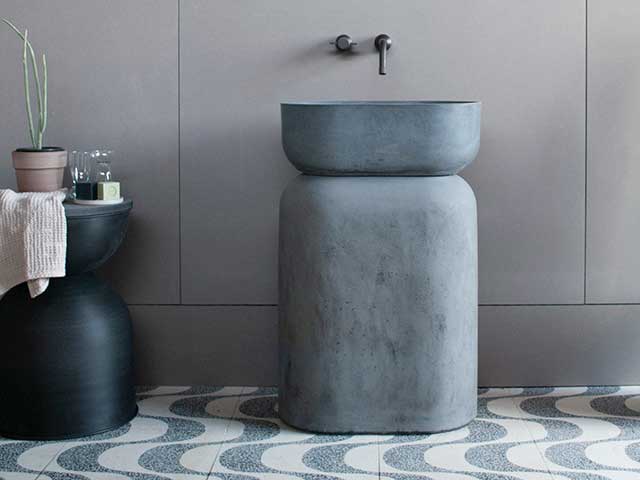
Photo: Formed
Opt for a futureproof design
Greywater recycling has its place, such as with this basin and loo combo. The waste water from the basin is filtered and used to fill the cistern, reducing use by up to 25%. This design in W+W in vitreous china from Roca is a is a perfect choice.
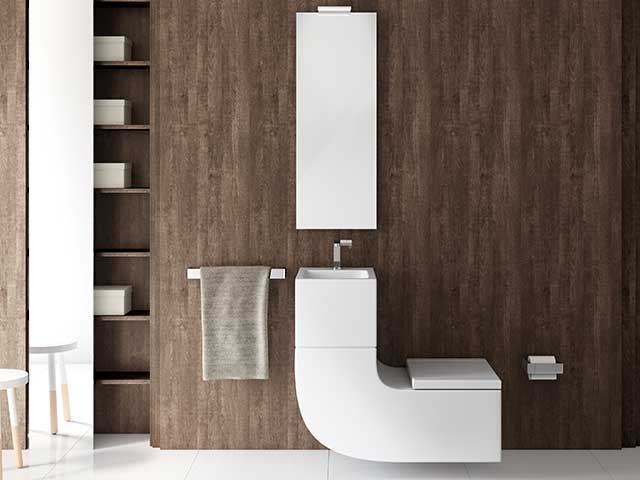
Photo: Roca
Using every last piece
Embedded stone chips give terrazzo its distinctive appearance, and are a good way to use up offcuts that might otherwise go to waste. This Unik washbasin, made with marble pieces and a resin-free binding material, is from Tikamoon.

Photo: Tikamoon
Capture carbon
Waterproof timber composites formulated with recycled wood waste are also recyclable. This tabletop design is made from 80% wood chips using locally sourced timber and forestry waste, and follows carbon-neutral production practices. Available from Woodio.
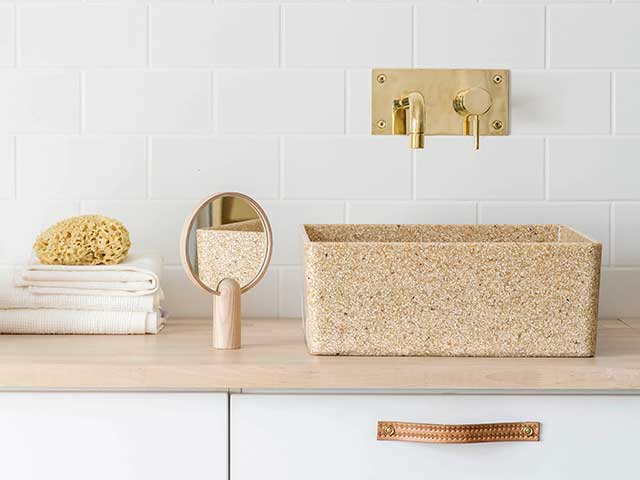
Photo: Woodio
Is it certified?
Trees store carbon, which is retained in the timber as long as it doesn’t decay or burn. Look for designs for eco bathrooms made with wood from responsibly managed forests like this Bianco FSC-certified basin in solid ash from Indigenous.
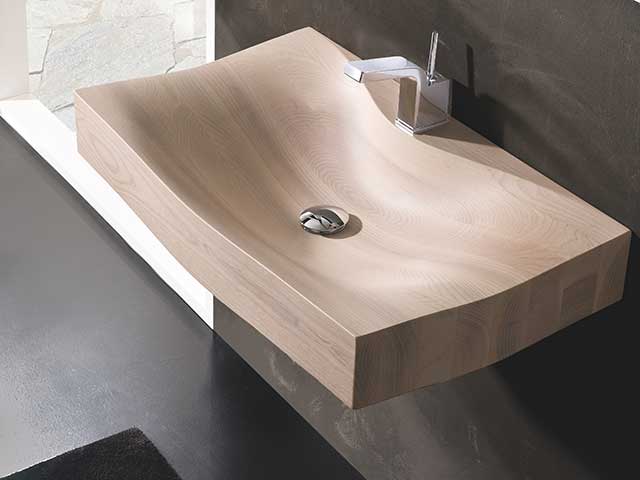
Photo: Indigenuous
Eco baths
Responsible innovation
Ensure designs made with composite materials include recycled and recyclable content. Some have a twin wall construction with an air space between that keeps water warm for longer. One such design is the Dune Aquatex solid surface bath, which costs from £4,547, Aquatica.
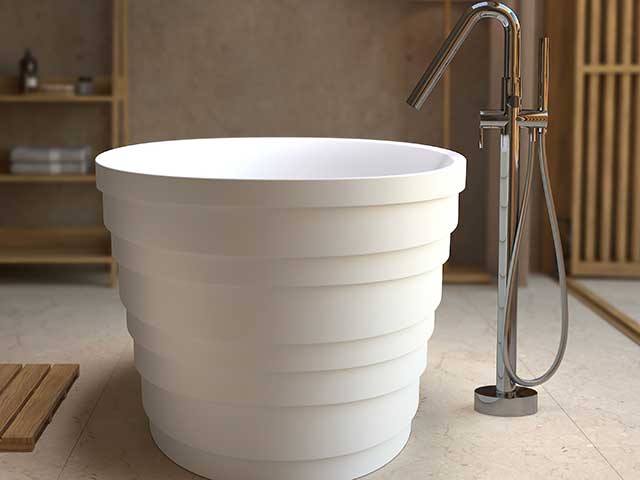
Photo: Aquatica
Pass it on
When renovating, sell or give away the sanitaryware and fittings you are replacing. Buying new? Consider models made with recycled and recyclable steel. This classic Duo oval double-ended bath made from 20 per cent recycled steel enamel and 100 per cent recyclable, available in three sizes from £1,999, Kaldewei.
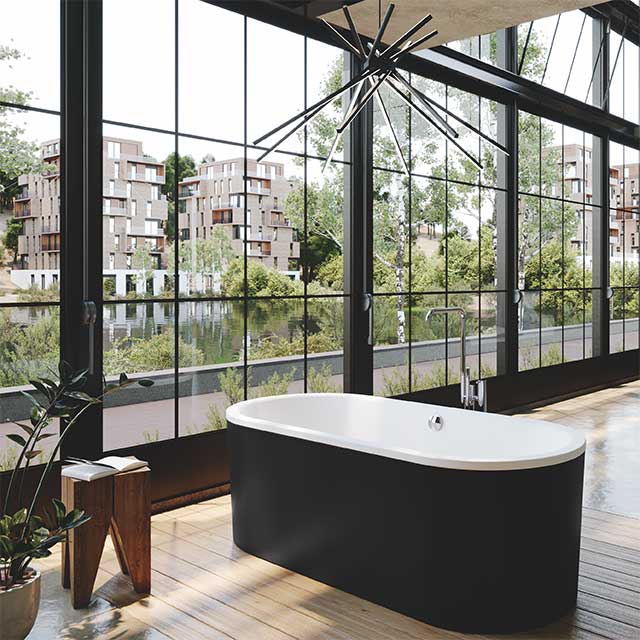
Photo: Kaldewei
Bath for life
Buy once and buy well is a good mantra. Invest in a durable and repairable cast iron bath and it will last a lifetime. Even better, look for manufacturers using recycled metal. Le Grand cast iron bath, manufactured in Kent using 100 per cent raw recycled iron, costing from £7,200, Catchpole & Rye.
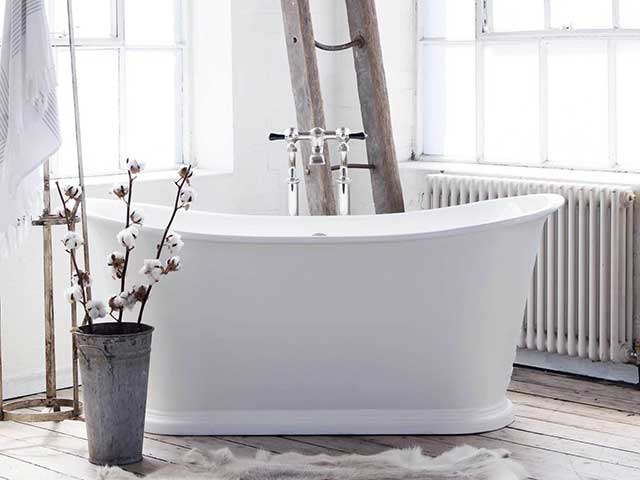
Photo: Catchpole & Rye
Hold onto the heat
To keep water warmer for longer and avoid costly top-ups, choose materials that retain heat well. Copper is particularly thermally efficient and has natural antibacterial properties. This handcrafted Copper Boat bath, costs from £4,449.06 for a model from BC Designs.
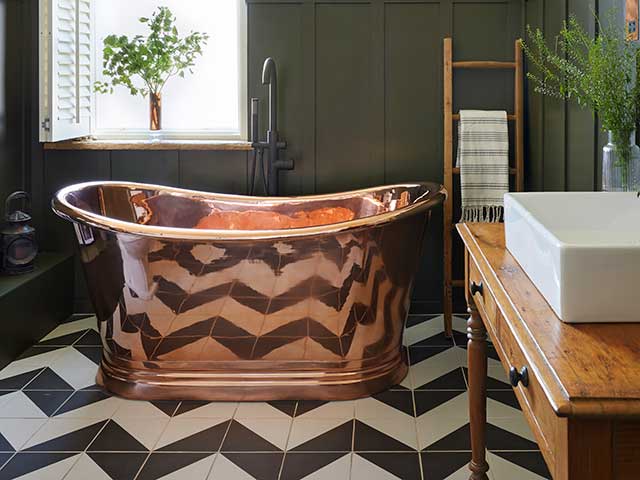
Photo: BC Designs
Make use of old plastic
Durat is a solid surface material made with recycled postindustrial plastics collected from manufacturing and waste management facilities. It is non-porous and anti-microbial. An example of this material being used is in the Durat Design Collection bath, prices start from around £5,000, Surface Matter.
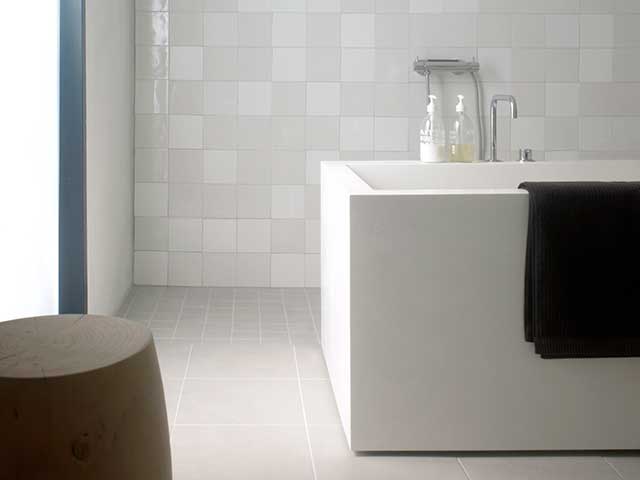
Photo: Surface Matter
Apply with care
Tadelakt is a waterproof plaster wallcovering made of natural materials that can also be used for basins and baths. For best results, it should be applied by an experienced professional. This bespoke bathroom, designed by Mark Lewis Interior Design. Tadelakt London can supply and install finishes, from £150 per sqm.
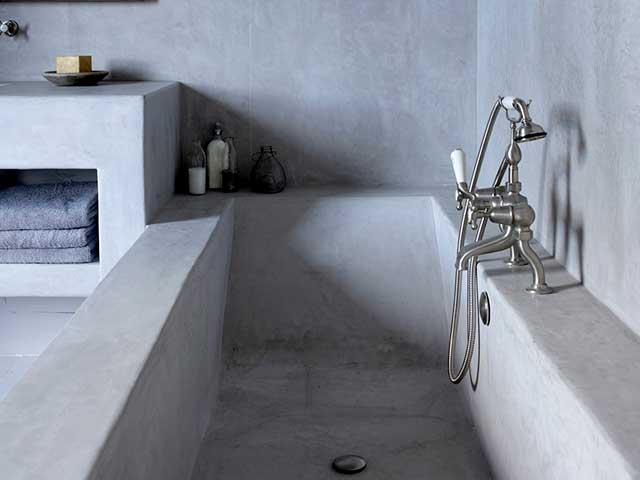
Photo: Mark Lewis Interior Design
Reclaim the past
Opt for vintage pieces from reputable suppliers. ‘Ensure reclamation yards and dealers are signed up to the Salvo Code,’ advises Sara Morel, CEO at Salvo. Bathroom designed by Nicola Harding & Co. Antique basin, The Water Monopoly. Washstand in Smoked Trout, Farrow & Ball. Vintage bath in Deep Water Green, Paint & Paper Library.
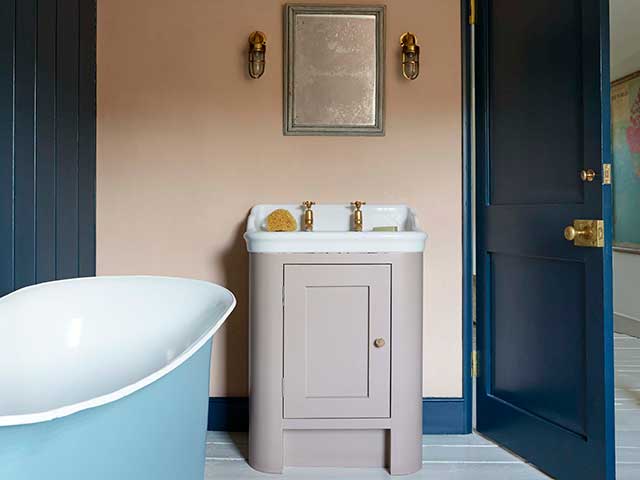
Photo: Nicola Harding & Co

